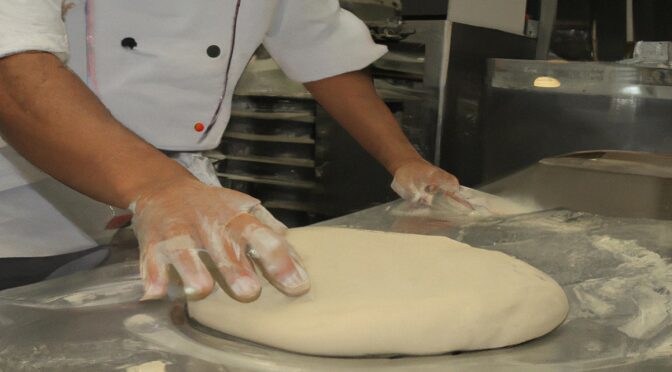Leavening when it's very cold. Introduction: Leavening of pizza is a fundamental step to obtain a quality product. However, when the outside temperature is very low, this process can be negatively affected. In this article, we will talk about the problems associated with leavening in extreme cold conditions and how to overcome them.
The rising pizza. The leavening of the pizza is a process that involves the use of yeast, flour and water. In this sentence, the dough is left to rest in a warm place, so that it can increase in volume. The ideal temperature for leavening is around 25-30°C, however, in conditions of extreme cold, this process can be hindered.
The cold influences the leavening
How cold can affect leavening. When the outside temperature is very low, the leavening process can become difficult. Indeed, the low temperature can slow down or even block the activity of the yeast, making the pasta heavy and not easily digestible. In addition to, the cold can also make the dough hard and difficult to work with.
How to overcome the problems of leavening in extreme cold conditions To overcome the problems related to leavening in extreme cold conditions, it is necessary to pay attention to the temperature of the ingredients used in the preparation of the dough. Eg, the water used for the pasta must be lukewarm, around 30°C, to best activate the activity of the yeast.
Leavening when it's very cold
Using the oven for leavening Another way to overcome the problems of leavening in extreme cold conditions is to use the oven to leaven the dough. Indeed, the oven can be used as a leavening environment, maintaining a constant and warm temperature. Just turn on the oven at minimum temperature, insert the dough inside and let it rise.
The choice of yeast The choice of yeast can affect the leavening in extreme cold conditions. Indeed, it is advisable to use highly active yeasts, able to withstand the lowest temperatures. In addition to, mother yeast can also be used, which guarantees greater stability of the leavening process.
The importance of flour
Even the choice of flour used in the preparation of the dough can influence the leavening in conditions of extreme cold. It is advisable to use high strength flours, capable of guaranteeing greater elasticity and resistance of the dough, despite the low temperatures.
Experience and professional training Pizza leavening is a delicate process and requires a certain amount of experience. For this reason, it is important to rely on professionals in the sector, who are able to handle it better rising of the pasta even in conditions of extreme cold. In addition to, professional training can be an excellent solution for learning the right techniques to better manage leavening in all climatic conditions.
Indispensable training
I Professional workshops to learn leavening techniques. For those who want to learn more about pizza leavening techniques and learn how to better manage the dough in extreme cold conditions, professional practical courses can be an ideal solution. during these courses, students will have the opportunity to learn pasta preparation techniques, leavening and cooking, under the guidance of expert instructors in the sector.
Conclusions In summary, the leavening of the pizza in extreme cold conditions can be negatively influenced, but there are several solutions to overcome these problems. The choice of ingredients, the use of the oven as a leavening environment and the choice of highly active yeast are just some of the possible solutions. In addition to, the professional training it can be an excellent solution for learning the right techniques to manage leavening in all climatic conditions. If you are interested in learning pizza leavening techniques, we invite you to discover ourprofessional practical courses. Follow the link
Ciao
Silvio Cicchi
Visit and subscribe to my youtube channel with over 300 Video recipes of pizza.
